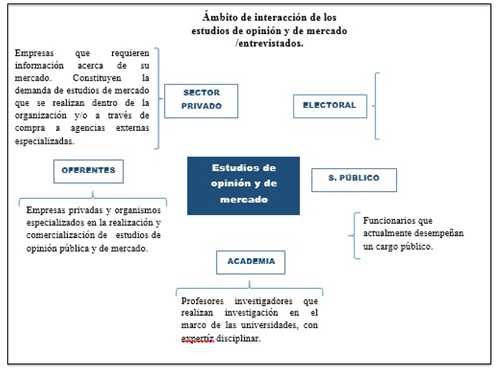
doi.org/10.15198/seeci.2020.52.95-117
RESEARCH
IMPORTANCE OF PUBLIC OPINION STUDIES: THEIR APPLICATION AND SEGMENTATION OF THE MARKET IN MEXICO
IMPORTANCIA DE LOS ESTUDIOS DE OPINIÓN PÚBLICA: SU APLICACIÓN Y SEGMENTACIÓN DEL MERCADO EN MÉXICO
IMPORTÂNCIA DOS ESTUDOS DE OPINIÃO PÚBLICA: A SUA APLICAÇÃO E SEGMENTAÇÃO DO MERCADO NO MÉXICO
Alejandra Zarzosa Codocedo1
Rosario Cota-Yáñez1
Ulises Rodríguez Cota2
1Centro Universitario de Ciencias Económico Administrativas. México
2Pasante de la licenciatura en Comunicación y Periodismo Deportivo del Instituto José Ramón Fernández. México
[1] This work summarizes part of the results of the case study: “Analysis of the local market of public opinion studies and markets, and factors that affect their credibility”, presented in the Master in Global Marketing of the Technological Institute and Higher Studies of West.
[2] Alejandra Zarzosa Codocedo: Profesora Investigadora de la Universidad de Guadalajara, Maestra en Mercadotecnia Global por el Instituto Tecnológico y de Estudios Superiores de Occidente. Licenciada en Mercadotecnia. alejandra.zarzosa@redudg.udg.mx
ABSTRACT
The objective of this work includes the carrying out of a descriptive analysis of the industry of public opinion and market studies in Mexico, the main characteristics of the market from the perspective of supply and demand, as well as market segmentation by type of product. The implemented methodology consists of the application of in-depth interviews focused on various sectors, such as public servants, candidates in electoral elections, campaign advisers and strategists, academic experts, directors of areas of information management and research in the private sector, such as agency directors and independent consultants on market research and public opinion. The final result tries to offer a vision about the dimension, specialization and professionalization of this industry in constant growth in Mexico. They are presented to public opinion and market studies as an indispensable tool for information gathering, analysis and decision-making, which make it possible to measure the preferences of the plaintiffs in any field. In the same
way that it shows, explains and analyzes what is the relationship and the degree of importance that emanate from them; Its importance lies in the fact that in recent years, they have come into force in various market segments, such as the electoral, public and private sectors, among others.
KEYWORDS: opinion study, electoral preferences, market segmentation, electoral marketing, exit surveys,offer, demand
RESUMEN
El objetivo del presente trabajo comprende la realización de un análisis descriptivo de la industria de los estudios de opinión pública y de mercado en México, las principales características del mercado desde la perspectiva de la oferta y la demanda, así como la segmentación del mercado por tipo de producto. La metodología implementada consiste en la aplicación de entrevistas a profundidad enfocadas a diversos sectores, como son: servidores públicos, candidatos en comicios electorales, asesores y estrategas de campaña, expertos académicos, directores de áreas de gestión de información e investigación en el sector privado, tales como directores de agencias y consultores independientes en materia de investigación de mercados y opinión pública. El resultado final trata de ofrecer una visión acerca de la dimensión, especialización y profesionalización de esta industria en constante auge en México. Se presentan a los estudios de opinión pública y de mercado como una herramienta indispensable para la recolección de información, análisis y toma de decisiones, que permiten medir las preferencias de los demandantes en cualquier ámbito. Del mismo modo que muestra, explica y analiza cuál es la relación y el grado de importancia que emanan de ellos; su importancia radica que en los últimos años, han cobrado vigencia en diversos segmentos del mercado, como lo son el electoral, el público y el privado, entre otros.
PALABRAS CLAVE: estudio de opinión, preferencias electorales, segmentación de mercado, mercadotecnia electoral, encuestas de salida, oferta, demanda
RESUMO
O objetivo do presente trabalho inclui a realização de uma análise descritiva da indústria dos estudos de opinião pública e de mercado no México, as principais características do mercado desde a perspetiva da oferta e a demanda, assim como a segmentação do mercado por tipo de produto. A metodologia implementada consiste na aplicação de entrevistas a profundidade focadas aos vários setores, sendo eles: servidores públicos, candidatos em eleições, assessores e estrategistas de campanha, especialistas acadêmicos, diretores de áreas de gestão de informação e pesquisa no setor privado, tais como diretores de agências e consultores independentes em matéria de pesquisa de mercados e opinião pública. O resultado final tenta fornecer uma visão sobre a dimensão, especialização e profissionalização desta indústria em constante auge no México. Se apresentam os estudos de opinião pública e de mercado como uma ferramenta indispensável para a coleta de informação, análise e tomada de decisões, que permitem mensurar as preferências dos requerentes em qualquer âmbito. Da mesma forma que mostra, explica e analisa qual é a relação e o grau de importância deles;a sua importância se fundamenta em que nos últimos anos, entraram em vigor diversos segmentos do mercado, como o eleitoral, o público e o privado, entre outros.
PALAVRAS CHAVE: estudo de opinião, preferências eleitorais, segmentação de mercado, marketing eleitoral, sondagens,oferta, demanda
Correspondence:
Alejandra Zarzosa Codocedo. Centro Universitario de Ciencias Económico Administrativas. México. Alejandra.Zarzosa@redudg.udg.mx
Rosario Cota-Yáñez. Centro Universitario de Ciencias Económico Administrativas. México. maria.cota@academicos.udg.mx
Ulises Rodríguez Cota. Pasante de la licenciatura en Comunicación y Periodismo Deportivo del Instituto José Ramón Fernández. México. ulises.101@hotmail.com
Received: 08/05/2019
Accepted: 27/03/2020
Published: 15/07/2020
How to cite the article:
Zarzosa Codocedo, A., Cota Yáñez, R. & Rodríguez Cota, U. (2020). Importance of public opinion studies: their application and segmentation of the market in Mexico. [Importancia de los estudios de opinión pública: su aplicación y segmentación del mercado en México]. Revista de Comunicación de la SEECI, (52), 95-117. doi: http://doi.org/10.15198/seeci.2020.52.95-117
Recovered from http://www.seeci.net/revista/index.php/seeci/article/view/545
1. INTRODUCTION
Opinion studies are a useful instrument to gather information in the field of research; they allow to measure and dimension a phenomenon. By creating measurable variables, to know the reasons why the plaintiffs prefer a product or vote preferences, the health needs at the time of putting a new ergonomic product on the market. Stand out within the pre-electoral type studies, the exit poll and the quick count, as well as the public opinion studies. Surveys represent a contribution to carry out market studies, which will later serve as inputs to other methodologies such as focus groups, in-depth interviews, among others.
The works that address the theme are by D`Adamo (2007); Ruíz (1997); Young (1995) and Rivadeira (1995), who express a consensus regarding the term public opinion and argue that it is not new, it was used since the eighteenth century, and it can even be traced in the works of Plato and Aristotle.
Public opinion is an instrument that presents the feeling of society sometimes influenced by the effect of the media. According to Ruiz (1997) it has two ways of understanding it: the traditional one that focuses on the definition and influences of opinion. For example: public policies adjust to the demands of public opinion; unlike the empirical tradition focuses on the data provided by a representative group of people, trend studies, political inclination, voting decisions, among others.
The importance of public opinion lies in the fact that it conditions behavior. Young (1995, p. 11) considers public opinion to be an ingrained but less consistent belief that knowledge has a verbal and symbolic character.
On the other hand, quantitative research offers social research the possibility of knowing the opinion of the population and, in particular, that which comes from citizens, regarding variables that are part of their lives; for example the evaluation of public services, housing, health, work, culture, transportation, social problems. Information that represents a useful input for the design of public policies and government actions aimed at implementing improvements and changes for the benefit of the population.
In the private sector, it allows those who make up this sector to carry out market measurements, having elements that contribute to their competitiveness and permanence. Among the great diversity of market studies carried out through the application of these tools, the ones that follow stand out: estimation of the potential market, estimates of sales, measurement of market participation, knowledge of image and positioning, brand awareness -top of mind-, among others. The possibilities of use offered by this tool are multiple depending on the needs in each situation.
The Annual Study of the Market Research Industry and Public Opinion Studies in Mexico, carried out by AMAI in 2014, mentions that the proportion of quantitative studies carried out is 73% compared to 25% of qualitative studies. They were required in 88% of cases by private initiative and the remaining 12% by the public sector (AMAI, 2014).
Among the most important companies according to the national ranking of the Mexican Association of Market Research Agencies and Public Opinion, in terms of carrying out quantitative projects are: IPSOS Mexico, Millward Brown Mexico, De la Riva, Applied Statistics and Market Research, Brand investigation, Marketing Group, GDV Group, Pearson, Consulta, Berúmen and Associates.
According to the electronic portals of each of the companies, it is found that they specialize in four categories: Public Opinion Studies, Electoral Studies, Market Research and Marketing Strategies.
Opinion studies: Collection of information from public opinion through surveys whose themes are mainly about social issues, government evaluation and / or public policies from the perspective of the population, whose research technique is based exclusively on surveys as a collection instrument, regardless of the statistical analysis carried out afterwards.
Electoral studies: Measurement of trends in electoral preferences prior to the election, exit poll and quick count.
Market Research: Design and execution of different research techniques to obtain information on different cases in particular. This type of study requires the different techniques that together offer information in order to cover a particular objective for the user or client at a specific time.
Marketing Strategies: This category considers companies that offer a great diversity of products, among which are electoral studies, as well as the capacity and experience to carry out market studies, they have the infrastructure for the production of audio visual production, design of advertising campaigns, or specialize in the measurement of audiences and / or consumption.
Even considering the different orientations, they are not mutually exclusive, with the exception of the company IBOPE AGB México, which focuses exclusively on audience measurement. This is also the case with the consulta Mitofsky case, which conducts market research, but it has an important position in the field of electoral studies given its presence in the media. In contrast, the company Berúmen y Associates has an important position in the private sector. On the other hand, KP Alasraki has a minimal participation in electoral studies, at least in those of a public nature, as well as in opinion studies, however, its presence is very strong in terms of market research and also the Diversification of its product extends to the design of advertising campaigns, media production. Applied Social Research (ISA), focuses on conducting opinion studies mainly and studies of an electoral nature but to a lesser extent.
2. RESEARCH OBJECTIVES
3. METHODOLOGY
A qualitative study was carried out by applying in-depth interviews to those who make up the market demand for public opinion studies and market studies; A descriptive analysis is presented in this regard, in particular the purchasing process is described, identifying the different uses and applications of this tool from the perspective of the different segments that make up the market (see Figure 1).
Source: own elaboration based on the research methodology.

Figure 1. Scope of interaction of opinion and market studies.
3.1. Investigation technique
The qualitative research technique in this case allows access to know the perspective of the person interviewed in detail, in particular semi-structured in-depth interviews, are carried out face-to-face with the interviewee and adhere to a thematic structure that allows guiding the subject of the interview ensuring the thematic coverage that meets the objectives (Aker. D 2010 p.189).
The interviews were audio recorded and later transcribed for analysis, taking an average of 20 to 30 minutes.
3.2. Collection instrument
The collection instrument includes the topic guide that asks open-ended research questions, among which the ones that follow stand out: Who makes up the supply and demand for opinion and market studies? What type of studies does demand require? What use does demand give to opinion and market research?
3.3. Research objectives
3.4. Field work
With regard to the selection of the study subjects, an element of consideration that represents a common denominator to determine the profile of the interviewees includes the fact that in the professional field they have taken on more than one occasion, and/or currently make decisions based on opinion and / or market studies, or they are professionally dedicated to the development of this type of projects.
As part of the group made up of the interviewees who make up the universe of study, there are some cases of those who have previously carried out professionally this type of study and who currently perform functions related to the field of research.
Eighteen semi-structured in-depth interviews were carried out, distributed among the different market segments:
The following table describes the profiles of the interviewees for the present investigation by each segment. It should be mentioned that the characteristics of some interviewees are reserved for confidentiality, at the request of some of them.
Table 1. List of interviews.
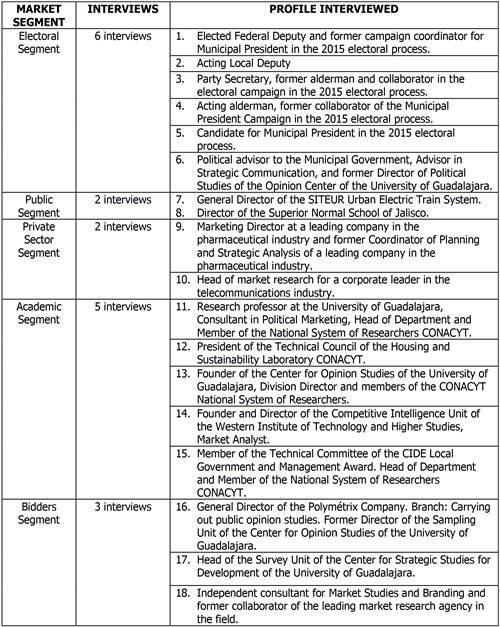
Source: own elaboration based on the research methodology.
4. DISCUSSION
4.1. The study objectives and their relationship with the different stages of the electoral process
In the particular case of the segment of the market called electoral, the demand for the information resource derived from opinion studies is accentuated in the period of time in which the electoral campaigns are carried out and the date in which the electoral elections are carried out. The interviewees affirm that at the beginning of the campaign, the purpose of the use of opinion studies includes the possibility of identifying those public figures who enjoy greater knowledge and acceptance by the population, and who could perform competitively in a contest. They affirm that public opinion studies represent a useful resource for them, it is presented at the starting point of electoral campaigns in order to consult citizens regarding the problems that occur in the town, to prepare work proposals in response to citizen demands. During the electoral campaign, the campaign team and / or collaborators make use of this measurement instrument to know and monitor the position of the candidate (s) throughout the duration of the campaign, to know the electoral preferences of the citizenship and voting intention, among other topics of interest, culminating on Election Day. At which time two studies are carried out with precise and previously defined objectives:
Exit Poll: Applied to the voters when leaving the polling booth after having voted, or, carried out a voting simulation (without official validity) when leaving the polling booth through a ballot box and ballot paper inviting voters who leave the booth to repeat their simulated vote. This information is collected and sent to a receiving base that integrates the information to be processed with the purpose of visualizing approximations to the advances in the results of the electoral day.
Quick count: At the end of the election day, the result of the count of the votes that were made in said section during the day is published outside each booth. This information is compiled from a sample of booths with the purpose of estimating the electoral results in a parallel but anticipated manner to the official results that will later be released by the official body in charge of carrying out the elections.
On the other hand, and once the elections have finished, together with qualitative tools, studies are carried out to identify the reasoning of the vote and the ill will. Once the elected candidate begins his duties, it is pertinent to generate information through the aforementioned methodologies to know the expectations of the citizenry regarding the incoming governments.
Figure 2 represents through a timeline the moments and reasons for using opinion polls during the electoral process.
Source: own elaboration.
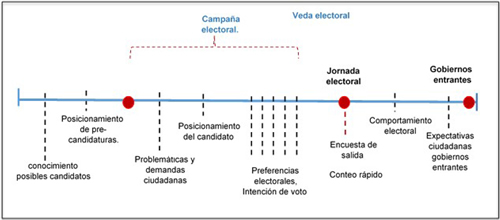
Figure 2. Timeline and study objectives.
The following is an example of an electoral survey carried out by the company Consulta Mitosfky that, with the aim of finding out public opinion on politics and society in Mexico, conducts a nationwide survey, which it publishes on its website with information regarding electoral preferences prior to the elections to be held this year. The sampling frame includes the list of electoral sections in the country, in the results of the federal election in 2015. Its sample size is 1000 citizens over 18 with voting credentials distributed throughout the country. The survey was applied in the address of the interviewees through a questionnaire from March 16 to 18, 2018, although the results also show comparative information to past surveys carried out by this same agency.
The results of the survey present candidate Andrés Manuel López Obrador as the first place in the preferences, who represents the alliance of the Labor Party, Morena and Social Meeting, in October 2017 he had 23.1% of the preferences and in the last measurement carried out in March 2018, he obtained 29.5%.
Source: consulta Mitofsky http://consulta.mx/
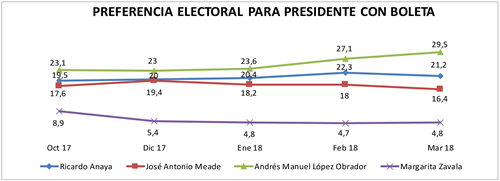
Graph 1. Electoral Preference for President Oct 17-March 18 Consulta Mitofsky.
The following table shows that Candidate Ricardo Anaya, who represents the alliance of the National Action Party, the Democratic Revolution party, and Citizen Movement is in second place in a comparison of 4 surveys carried out between December 2017 and March 2018, where his global progress in said period is 2.2%. While the third place is occupied by Candidate José Antonio Meade who represents the Institutional Revolutionary Party, Green Ecological Party and New Alliance, who in relation to the results of December 2017 to March 2018 decreases 3%
Source: consulta Mitofsky http://consulta.mx/
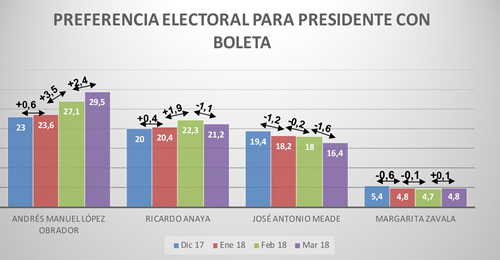
Graph 2. Electoral Preference for President Dec 17 - March 18. Consulta Mitofsky.
It is worth mentioning that these surveys were applied in the period prior to the electoral campaign and the most recent one corresponds to March 2018, which accounts for the position with which the candidates begin the official electoral campaign. This shows that they have a considerable position as public figures at the starting point.
This study is a sample of the use and application of public opinion studies in the electoral field. They are tools that represent a compass for the candidates and their campaign strategists, but at the same time, it allows the population to learn about the positioning of their candidates, the advances and movements that occur over time in the development of the electoral campaign.
4.2. Opinion studies and decision-making
The interviewees affirm that opinion studies are a very useful tool to make strategic decisions, which allow identifying the position of the candidate they support, as well as to know their strengths and weaknesses based on public opinion, to know the intention to vote of the voters, the margin of undecided voters among others. To identify the geographical points where campaign actions should be reinforced and the problems to be solved in a short term. There are those who affirm that 80% of the decisions made during the campaign are carried out using as input opinion polls (see Figure 3).
Source: own elaboration based on the research methodology.
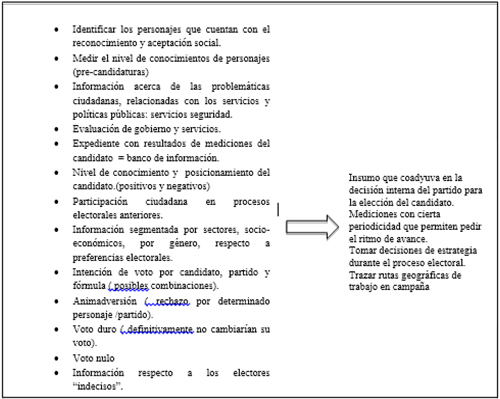
Figure 3. Opinion studies and decision-making.
The following graph is an example that shows in more detail the particularities of the intention to vote for President when the electoral campaign begins, where one who can identify as a volatile vote, the one of who shows certain intention to vote, whose decision may change at any moment. The hard vote corresponds to those people who, when surveyed, state that their intention to vote will be unshakable. In this sense, the one with the highest percentage of hard votes is Candidate Andrés Manuel López Obrador with 19.2%.
Source: consulta Mitofsky http://consulta.mx/
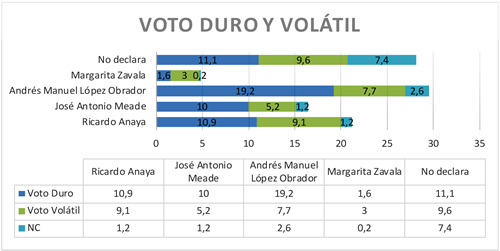
Graph 3. Electoral Preference for President - hard and volatile vote March18. Consulta Mitofsky.
Regarding the market segment corresponding to the public sector, the interviewees comment that the studies in question allow feedback to public servants regarding the quality and efficiency with which the service is offered to citizens, considering that the information generated by this type of studies is based on the experience of use and/or reception of the public service by the user/recipient of the service, both in the field of education, health, transport, and public services (water, electricity, drainage).
This way, opinion studies generate information that reflects the level of efficiency of the service in question and the level of approach to the parameters established by the same body, which sometimes constitutes evidence to prove compliance with quality indicators established by different external accrediting and certifying bodies in this field.
To cite an example, recently the Urban Electric Train System (UETS) incorporated as part of its service, the possibility for users to park their bicycles at different stations; offering the possibility for cyclists to carry out a mixed type of combined transport between the train Line and bicycle transport. The implementation of this program occurred as a result of an opinion study that was carried out with the aim of compiling user demands, as confirmed by the head of the agency, who considers that opinion studies are a tool that is part of the government plan, since they contribute to decision-making, particularly those that have a direct impact on citizens.
The interviewees mention as objectives of the study to be solved with the realization of citizen surveys, is to detect public needs, identify the needs of the cities regarding public works, know the acceptance/rejection regarding the implementation of specific programs.
The following are some of the study objectives in this sector:
Interviewees in this segment affirm that decisions cannot be made based on personal perception or individual criteria, and no official of the public administration should make decisions outside of public opinion; therefore, opinion studies are the ideal tool.
The following is an example of a study corresponding to this market segment -public sector- carried out with the aim of evaluating the acting government of the State of Jalisco in 2017. The study was carried out by the company Consulta Mitofsky, dated from March 24th to 26th, 2017 to a sample of 400 citizens over 18 years of age residing in the State of Jalisco, applied face to face at their home.
The results of the study show that just under half of the population (44.4%) approves of the current state government, which is less, compared to the results of the same study carried out previously in June 2013 where the Governor had 54.3 % of approval.
In counterpart the percentage of the population that agrees with the State Government headed by Aristotle Sandoval, presents a considerable increase of 14.8 percentage points in March 2017 (44.4% approval), compared to the results obtained in the first Government evaluation survey carried out in June 2013, in which it obtained 54.3% approval, which gradually decreased as subsequent evaluations are presented, obtaining the lowest percentage of approval in February 2016 with 39.9%.
The results showed in this survey are compared with the information generated by the same agency (Consulta Mitofsky) (Graph 4), where it can be seen that the national approval average of the governors shows the same trend in terms of a gradual decrease according to the advance of the government time, detected in the measurements of this survey carried out at 5 different times: June 2013, June 2014, April 2015, February 2016, and March 2017. This decrease includes the starting point with an average evaluation of agreement of 62.1% to become 32.5% of approval in March 2017. In this sense, the evaluation of the Government of the State of Jalisco compared to the average evaluation of the Government in the country is in a position above the lowest average in the survey carried out in March 2017, in which it obtained 44.4% approval, compared to the average that obtained on this same date 32.5%.
Source: consulta Mitofsky http://consulta.mx/
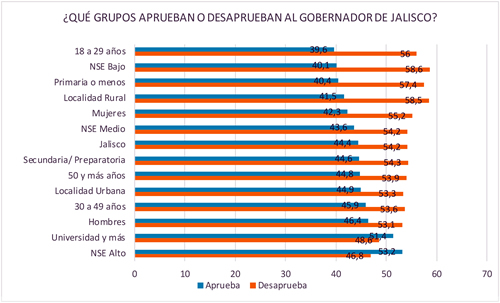
Graph 4. Jalisco evaluating its Government- Evaluation by groups.
In relation to the different segments that make up the population under study, and in this same evaluation, it can be identified that the acting government obtains a better evaluation in groups whose socioeconomic level is high, who have university studies, as well as in urban localities. While the highest percentage of disapproval is found among young people between the ages of 18 and 29, in the lower NSE and in rural areas.
4.3. Market studies in the private sector
The interviewees who represent the business sector state that they carry out market studies made up of different instruments that, taken together, generate information that responds to the particular needs of their organization, in such a way that the studies are as many and as varied as the great diversity of lines and branches that make up this sector, where “ad hoc” studies are carried out, to the particularities of the company and its circumstances.
The tools that make up the design of these studies are surveys, depth interviews, focus groups, observation, projective techniques, and ethnographic studies.
Among the interviewees, differences were identified regarding the accessibility and conduct of the studies of each company; since there are cases, in which the company has as part of its organizational structure, a specific area destined to carry out its own market studies, and therefore it can be said that they are self-managing in the generation of information; On the other hand, cases are presented in which the organization has an area of specialization in the identification of information needs, dedicated and specialized in the search for external suppliers (research agencies), to respond to the information needs raised by the organization. The two previous ones in combination also comprise a reality in this sector, where only part of the market research is carried out “in house” and the other part through purchasing from suppliers.
In both cases the decisions that revolve around the product and / or service are large-scale, and have a direct impact on sales, so managers assign the deserved value to the information that allows them to make decisions with precise foundations and where carrying out this type of study is part of the daily life of the organization and represents a fundamental element for success.
In this same segment, a fraction of the market is identified, made up of those companies that do not have the supply of internal information and resort to market research through specialized agencies outside the company.
There is a great diversity of study objectives that are carried out in this segment, among which are: Brand awareness level, Market share, Product / service evaluation, Product perception and image, Market share behavior: Periodic measurements that allow to identify the movement of the market among the different brands, Information on the competition, Prior to the launch of a product: acceptance of qualities and characteristics, Identification of niche market, Identification of causes of decline in sales.
For this group of interviewees, market studies also constitute evidence to respond to key performance indicators that require a demonstration of primary sources regarding the position of the product in the market, its strengths, and its position against the competition, among others.
The interviewees require the generation of information through market research to answer questions such as: having the opportunity to identify the reasons that cause a drop in sales, identify competing brands and products that the consumer knows, also identify the person who he buys from, whether it is the consumer or the client of the particular brand / product, identify previous loyalties to other brands and the causes of the purchase relationship fracture, know the evaluation of the service by the user , identify the leading brands in the market according to the Top of Mind, know the actions carried out by the competition, among which is the review and analysis of their campaigns, their prices, among many others.
The following is a fragment of a market study carried out by Mercawise Company, called Market Study on the use of gyms and food supplements, applied to 209 users of its website, selected through the simple random method.
The market study shows that 20.6% of those interviewed who used to exercise in the gym have been subscribed to it in a period of 6 to 12 months, while 19.1% from 3 to 6 months and 18.7% from 1 to 3 months (Table 2).
Table 2. Market study Use of gyms and food supplements. Gym time.
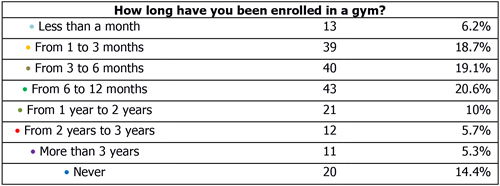
A third of the surveyed population (36.4%) attends the gym to exercise 2 or 3 times a week and a quarter of the interviewees (26.8%) attend 4 or 6 times, while only 9.6% attend these kinds of places every day to work out. Where the most important reason to choose the gym of the preference of the users, is that the facilities must be to their liking (20.1%) and the price according to their possibilities as stated by 18.7% of the respondents as well as the fact that the gym offers personalized attention to its users 17.7%.
The main motivator to go to the gym to exercise is health, according to 41.1% followed by interest in improving their physical appearance for 33% and improving physical condition for 18.2%. The preferential payment period of 71.3% is in monthly payments, and only 10% show availability of bi-monthly payment and 8.6% quarterly.
Regarding food supplements and the level of knowledge of the respondents, more than half (63.2%) state that they have knowledge about them, however this knowledge is limited when referring to it as "I have an idea, but I do not know them completely” , While a quarter (25.8%) of the population declares to have knowledge and 11% does not know.
The potential food supplement purchase market as part of the diet in combination with exercises as part of the gym services is viable for 26.8% of the interviewees as long as the cost of these is reasonable; However, 37.3% consider the consumption of this type of supplements very important to see exercise results, so they would definitely be willing to take them at an extra cost. On the other hand, 29.2% are undecided in this regard and only 6.7% are totally reluctant to consume the mentioned products.
4.4. Surveys in academic research
The research that is carried out in universities at the hands of experts and specialists in various subjects pursues a benefit for society, and therefore the results of this type of research are applied to different areas. This is how applied research requires interaction with social actors, and the collection of information from certain groups, for which, among other mechanisms, the survey is a tool that allows the researcher to obtain this information.
The interviewees in this segment made up of academics who, as part of their functions, carry out research, refer to the following as studies that require the information generated through surveys: Demography, Gender studies, Quality of life, Demographic dynamics, immigration, Housing , Energy consumption, Home security, Spatial segregation, City, urban planning and territory, Perception of public spaces and green areas, Use of water and energy, Housing and planning policies and programs, Education, among others.
It is worth noting the relevance of secondary information in this sector, since it provides valuable elements for long-term research. In this segment, the application of this type of study is identified in two ways; In the first one, there is secondary information where the studies are carried out by external organizations and the information generated represents a valuable input that supports the research carried out by the teacher, and on the other hand, there is the survey that is carried out as part of the research, which generates detailed information and responds to particular research objectives.
According to the opinion of the experts in this matter interviewed; Surveys pay for the development of knowledge, particularly in social sciences, in the case of economics and administrative disciplines, whether in the commercial or research field; for both, the surveys represent an input of considerable importance. From their perspective, 50% of the problems that occur can be addressed through this type of study, in addition to the fact that there are important institutions such as: INEGI, an organization that in the opinion of the interviewees has developed favorably in the last 15 years, and that generates a wealth of valuable information to be considered as a source of secondary information.
The interviewed academics consider that the survey as a tool offers answers to very particular and specific questions or topics that have not been previously addressed as a product of another source. Organizations that generate information are mentioned through institutional type surveys, such as the information produced by INEGI, among the surveys they mentioned include: Population and housing census, economic census, monthly industrial survey (MIS), annual survey of commerce (ASC), national survey of employment, wages, technology and training in the manufacturing sector (NSEWTTMS), among others. This information, among others, is openly available to the public; however, they comment that the way in which the agency offers the information requires certain skills and / or knowledge about the use and management of databases.
The following is an example of a survey carried out by the National Institute of Statistics and Geography (NISG) on the availability of Information and Communication Technologies (ICT) in homes and their use by individuals, called (NSAUITH) National Survey on Availability and Use of Information Technologies in Households where the survey started in 2015 is continued, now applied in 2017 in 32 states and 49 cities, supported by the Ministry of Communications and Transportation and by the Federal Institute of Telecommunications. The survey carried out is applied to a randomly selected member of the household who provides information on the use of information technologies through the application of a structured questionnaire.
NSAUITH 2017 reveals that 17.4 million households have Internet (50.9% of the national total) either through a fixed or mobile type connection, which means an increase of 3.9 percentage points compared to the previous year.
The survey presents results for the urban and rural areas; In this sense, the survey shows that 86 out of 100 Internet users in the country are located in urban areas, and the rest (14 out of 100) are in rural areas.
When comparatively reviewing the 2017 survey versus the 2016 survey, it can be seen that the main reason for the use of the internet comprises obtaining information, entertainment and communication with 96.9%, 90.0% and 91.4% respectively.
The survey allows measurements to be made to make comparisons with information from other countries, thus identifying Mexico's position in internet use compared to the index of other countries, where Sweden, the United Kingdom, South Korea, Japan and Germany, nine out of ten people are Internet users; while in Mexico the proportion is six out of ten people.
In addition to the above, the survey also presents information about cellular telephony globally and by state, by type of equipment and by type of connection, as well as it inquiries about the installation of applications, in addition to the use of computer equipment, and access to digital television.
5. CONCLUSIONS
Public opinion and market studies constitute an important national industry that produces thousands of units annually, whose offer is made up of a great diversity of companies located nationwide, whose diversity lies in the specialization of the type (s) of studies carried out, which is directly related to the typification of 4 types of studies, and from the marketing point of view, this variety constitutes a line of 4 product variables among which are: Public opinion studies, electoral studies, market research, as well as marketing advice and consultancy.
From the perspective of demand, a clear segmentation can be identified by type of product, which in that case is defined by the objectives of the study, in such a way that the segmentation of the market in question is made up of the electoral segment, the public sector segment, the private sector and academia; all of them require, generate and demand information from a certain population.
In the case of the electoral segment, the objectives of the study are directly linked to the times in which the electoral processes are carried out, a period in which a variety of studies are carried out, among which the ones that follow stand out: positioning of pre-candidacies and candidacies, electoral preferences and voting intention, exit poll and quick count, among others.
In the public sector segment, studies are carried out that provide feedback to the public function regarding the efficiency and quality of the public services they provide to citizens, through studies on various topics, including: evaluation of public services, evaluation of government, perception and public opinion regarding current events, among others.
In the private sector, studies integrate greater complexity as part of their methodology, made up of various techniques whose design includes the combination of these depending on the research objectives. Among the techniques that make up this methodology are surveys, depth interviews, focus groups, observation, projective techniques, and ethnographic studies, among others.
This segment, in turn, is subdivided into three groups: the first one is made up of those companies that have self-management capacity in the generation of information who, as an internal part of their organization, have a department dedicated to carrying out studies of market from start to finish, according to internal requirements, a second group of companies that have a team of people who are immersed in the information needs of the company that specialize in the search and selection of suppliers in the field of market research and contract research services to external providers and finally a third group made up of companies that do not have any team to deal with research.
Among the types of studies carried out in this segment are, a study on the level of brand awareness, measurement of market share, evaluation of the product / service, perception / image of the product, among others.
The descriptive research of the market of public opinion and market studies allows us to measure the degree of specialization and professionalism that constitutes it as an industry that provides highly reliable information, both nationally and internationally, made up of professionals who specialize in the subject, all variables that as a whole translate into a high quality of information for decision-making.
AUTHORS
Alejandra Zarzosa Codocedo
Research Professor at the University of Guadalajara, Master in Global Marketing from the Western Institute of Technology and Higher Studies. Graduated in Marketing, she has specialized in conducting Opinion Studies. Research lines Marketing, Market Studies, Local Development.
Alejandra.Zarzosa@redudg.udg.mx
Rosario Cota-Yáñez
Professor-Researcher of the Department of Regional Studies of the University of Guadalajara (DER / INESER). Degree in Economics, Master in Regional Development with a specialty in Public Policy, Doctor in Social Sciences with a specialty in Regional Development. It belongs to the Academic Body Productive Restructuring and Local Studies UDG 643. Lines of research: local development, small companies, public policies. Postal address: Periférico Norte 799, Module M. 2nd. Level, Los Belenes University Center, Department of Regional Studies (DER-INESER) CP. 45100, Zapopan, Jalisco, Mexico. Telephone 37703404 and 37703300 ext. 25253.
maria.cota@academicos.udg.mx
Orcid ID: https://orcid.org/0000-0002-1866-7191
Google Scholar:
https://scholar.google.com.mx/citations?user=f1yDbrAAAAAJ&hl=es&oi=sra
Researchgate: https://www.researchgate.net/profile/Maria_Yanez22
Redalyc: http://www.redalyc.org/autor.oa?id=25377
Ulises Rodríguez Cota
Intern of the degree in Communication and Sports Journalism. José Ramón Fernández Institute. Currently he disseminates on social networks (Facebook and Instagram) relevant information on the results of soccer, American, and baseball games, among others. Page: Sports Summary registered with the Mexican Institute of Industrial Property (IMPI), No. 2044657.
ulises.101@hotmail.com
Orcid ID: https://orcid.org/0000-0003-3951-1695